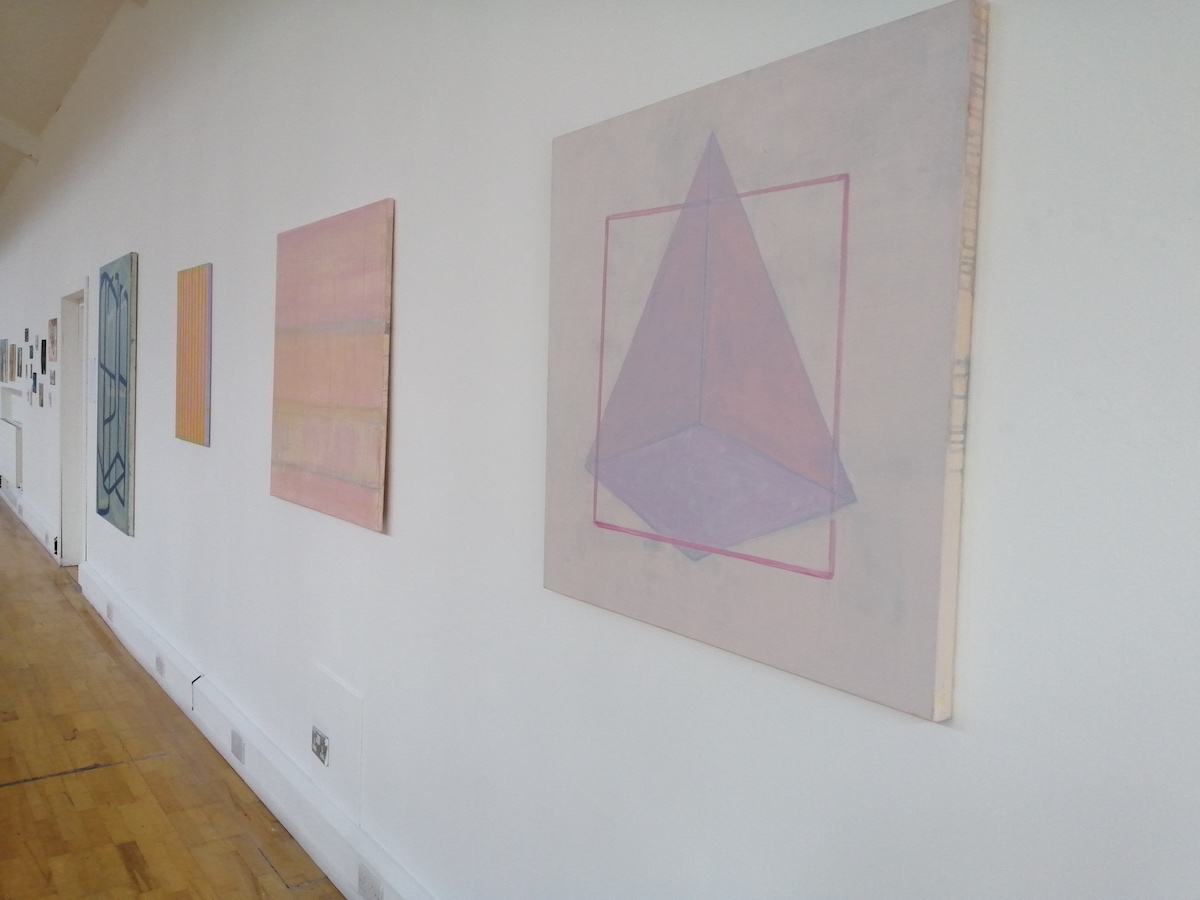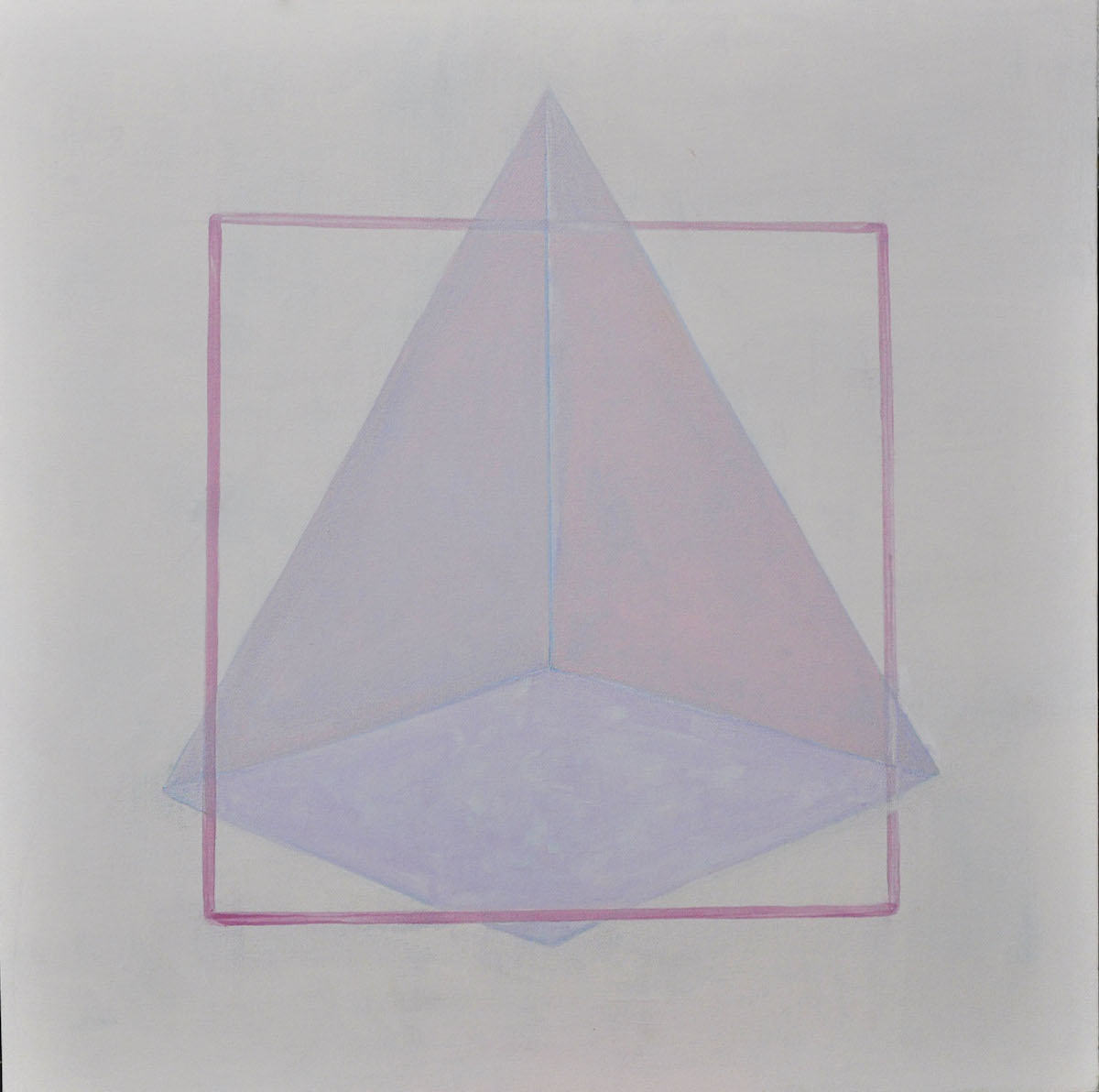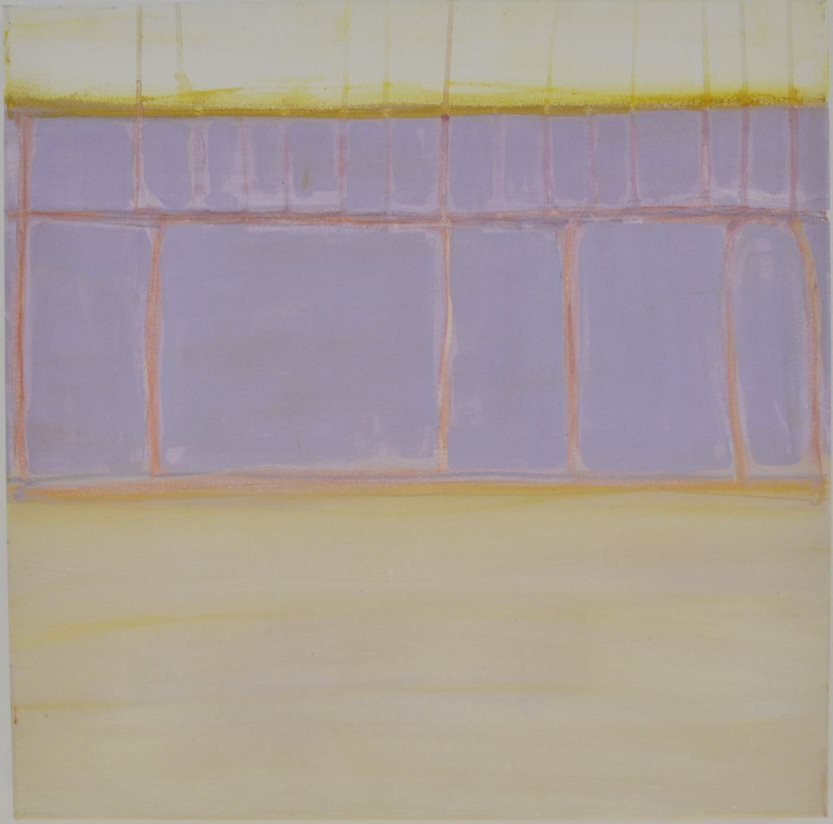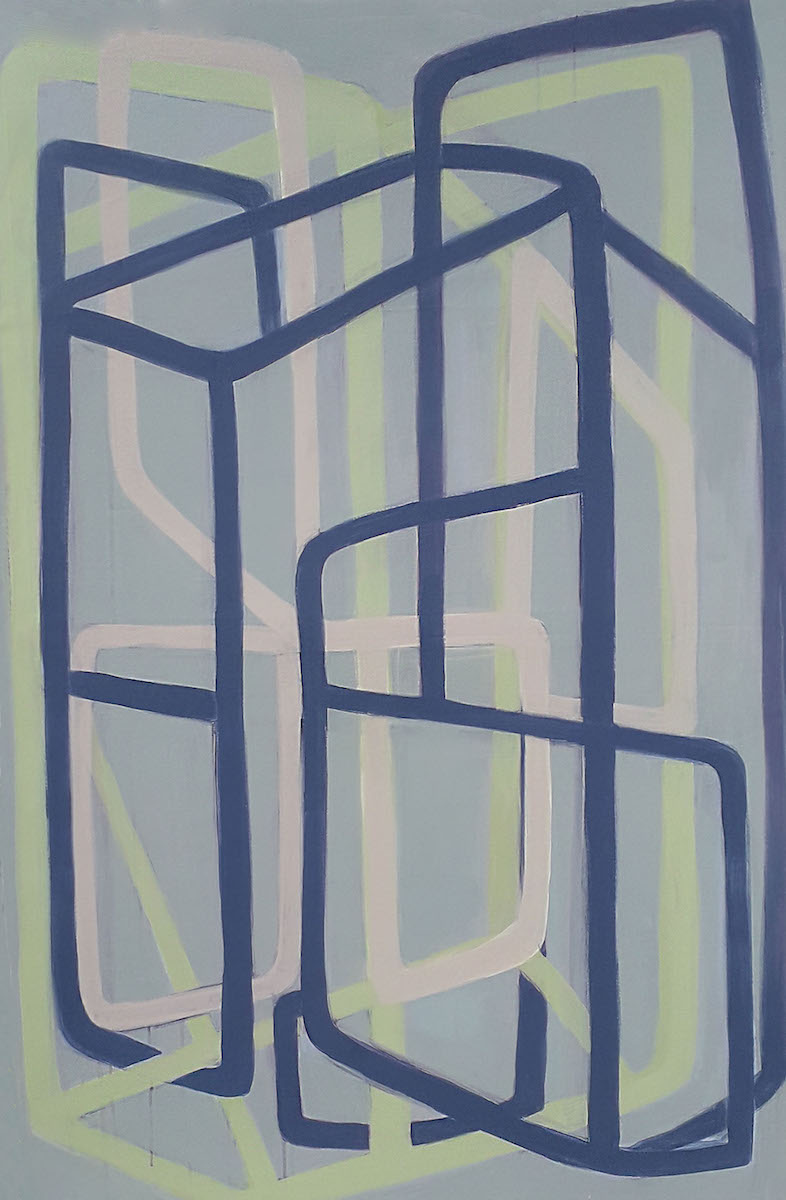Meadhbh McNutt: Geraldine O’Brien
On first glance, Geraldine O’Brien’s abstract acrylic paintings are simple, eye-catching and unchallenging. After a minute or two though, something else clicks into place. Focusing on the series of geometric compositions, my eyes flitter between positive and negative space. More than mere spatial illusions, these compositions are also emotional shape-shifters. They radiate a joyfulness that gives way to a sense of quiet melancholia.
O’Brien’s palette of sunny yellows, vibrant pinks and muted pastels appeals to a vital, dare I say, primal energy. This aspect of the work leads me to contemplate early Suprematist attempts from the likes of Kazimir Malevich to seek purity and artistic freedom in the sheer power of colour and geometry. The more structural qualities of O’Brien’s paintings lead me down a different path, to the meditative stripes and grids of Agnes Martin’s studies in repetition. The ideal of what Martin called “happiness and innocence” appears present but in a more inquisitive than celebratory vein.
O’Brien tells me that her palette was once dark and murky, before she discovered the ironic potential of bubble gum colours with feminine connotations. The symbolic potency of colour charges abstract forms with implicit gender ideals – ideals which transfigure in titles mentioning ‘pink haze’, prisons, illusions and theories. These titles act as warnings, highlighting the inner conflicts of outwardly tranquil forms. In Structural Illusion, a cage of interlocking lines in gradient tones makes for a fragile, albeit unified system. Placid colours take the edge off this chaotic network. The effect is something like a strained arrangement suspended in time. Beautiful Prison 1 places the viewer below an elongated closed window, looking out at the purple hues of evening. The scene is a quiet and abstracted moment of beauty, curtailed by feelings of finitude and confinement at the arrival of dusk.
However discreet, these images are raw and powerful in conjuring the kind of cognitive dissonance that underlies feminine experience. If they promise aesthetic purity, it is a fragile and fleeting promise. What we get instead is a contorted beauty – a demand for compassion in the place of admiration.





